P5140046
g ligaments that
The sacroiliac joint if formcd by the sacrum and iiium and is hołd in place wi!hnjn,cdan^ypo^^l allow for a degree of movement. Tbis joint can becóme hypcrmobile, sprnined,in bile as the result of twistlng, rotating or motions that load forces to this joint. ^ ^ cOUld not become
For ycars many believed tbis joint did not movc, and sińce it did not moV>Ł jvjc ^ pelvic rotation, injured. When tbis joint becomes involved it may load to chnnges in posturę, p ^
and lumbar spine mobility.
The Kinesio taping metbod will assist in reduction of effusion, joint patn * balance associatcd witb pelvic stabilization.
,nd assist in muscular
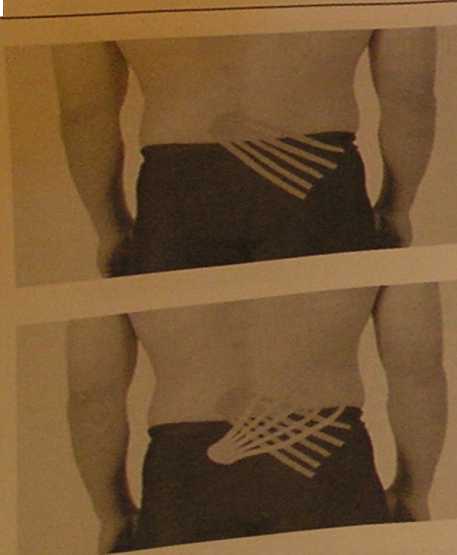
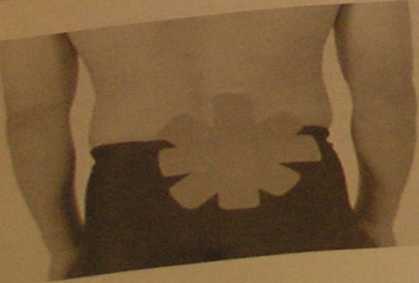
Initial treatment for inflammation or edema is provided by npplying two Kinesio lymphatic correc-tion tochniques. For review see lymphatic correction
technique.
Begin by placing the base of the Kinesio fan strip approximately 2-3 inches superior to the sacroiliac (SI) joint along the spinous processes with the pati«n>i in a neutral spine position. Have the patient move into forward flexion with rotation to the same sideas the injured joint .The tails of the fan strip should angled downward at 45 degrees over the SI joint aS ending near the superior aspect of the gluteus maximus.
The second Kinesio fan strip is placed approxi-mately 2-3 inches inferior to the SI joint along the spinous processes with the patient in neutral spine position. Have the patient move into forward flcxion with rotation to the opposite side of the injured joint The tails of the fan strip should be angled upward at 45 degrees over the SI joint and ending near the superior aspect of the posterior superior iliac spine.
Initiate glue activation prior to any further patient movement.
puring the evaluation the practitioner may ermine that several muscles are also involved. psibly a tight iliopsoas, pisiform, gluteus maximus. buadratus lumborum. In addition to the above peribed lymphatic correction a basie musde nesio taping technicjue may also be appropriate.
For this cxample the quadratus lumborum has taped. An insertion to origin technique was sed with 5-10%, paper off tension.
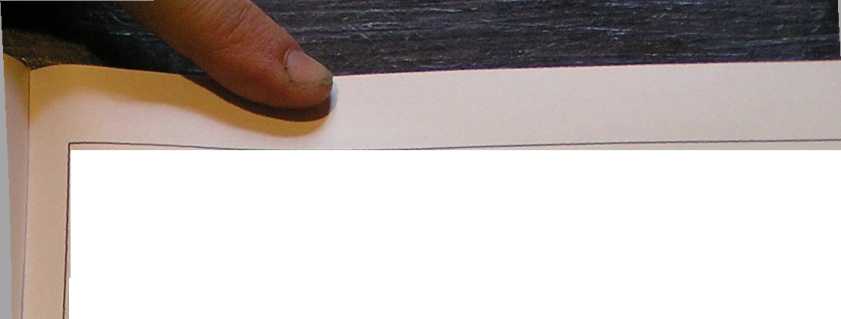
Spondylolysis and Spondylolisthesis
Spondylolysis is a degenerative condition to the vertebrae in the lumbar 4-5 region that can be either bilateral or ipsilateral. The pars interarticularis region of the vertebrae may be fractured from repetitive trauma or a congenital weakness. Spondylolisthesis is a complication or result of spondylolysis that results in an anterior movement of the vertebral body. These conditions arc generally exacerbated by repetitive hyperextension movements.
The Kinesio taping mcthod will assist by reducing effusion, pain and assist in muscular imbalance associated with pelvic stabilization.
Options which are not shown: crector spinae strain and lumbar disk.
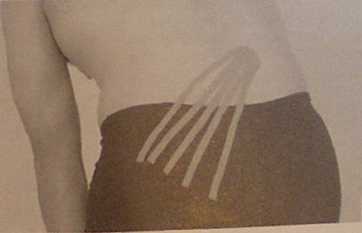
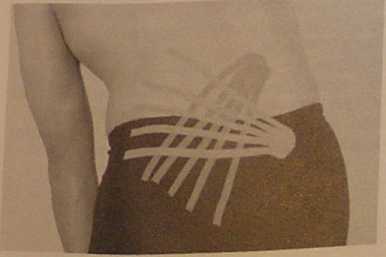
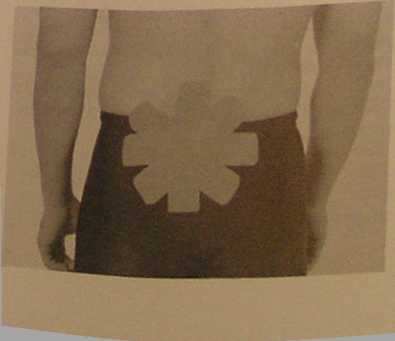
Aculei Initial treatment for inflammation or eder is provided by applying two Kinesio lymphatic correction strips. For review see lymphatic correctit technique.
Begin by placing the base of the Kinesio fan strij approximately 2-3 inches superior to the location o the edema along the lateral flank with the patient i: neutral spine position. Have the patient move intc forward flexion with rotation to the opposite side a the edema. The tails of the fan strip should be angled downward at 45 degrees over the edema ar ending near the superior aspect of the sacroiliac joi Strips may also be applied to direct the edema across the spinous process to the unaffected side.
The second Kinesio fan strip is placed approxi-mately 2-3 inches inferior to the edema along the lateral flank in the region of the PS1S with the pati in neutral spine position. Have the patient move i forward flexion with rotation to the same side as t edema. The tails of the fan strip should be anglec upward at 45 degrees over the edema and ending near the spinous processes 2-3 vertebrae above th> involved joint.
Option One: Star Technigue Lumbar Back Application of the star technique for lumbar intervertebral disk hemiation.
Wyszukiwarka
Podobne podstrony:
P5140026 Neck Sprain or Whiplash The Kinesio taping technique wili assist with reduction in edema, m
mbs 069 M BREATHING >Y>IKM phy.sicai culture, it is no wonder that the death-rate from consump
88 A. Wawrzak, K. Karwowski, K. Karwowski, S. Mandra, M. Mizan Assuming that the bandwidth of veloci
1972 Nations Unieś — Recueil des Traites 107 which is other or morę burdensome than the taxatio
It seems that the implementation and the realization of our workers self-management was chiefly gove
img021 One may determine that the rea-son an individual is unstable in standing is in part due to hi
Tree?corations Tree decorations 3. Cover each lemon with glue. Put glitter or $equin$ on to the
Obraz (123) As a proficient speaker, it isn t that you don t know that the past tense of swim is swa
Reflections In the previous section it was stated that the forward and backward waves may be entirel
during interviews with teachers. This analysis shows that the level of teachers’ knowledge is Iow, e
DSC(22 9 9 ifi BO) «■ flag I Lisomes, indicating that the ria and chloroplasts and at , accompa
00216 ?e7b2021092421cf45af4c94abbb03e 218 Baxley where the a, ’s are NID(0, a]) representing random
CCF20100216�005 2 The production of speech sounds 13 Cardinal vowel no. 1 has the symbol [i], and is
33 (403) H fo3434RE-23R -3- H. Receives V* allowance while in the RPF and is not e
CCF20100216�005 2 The production of speech sounds 13 Cardinal vowel no. 1 has the symbol [i], and is
więcej podobnych podstron